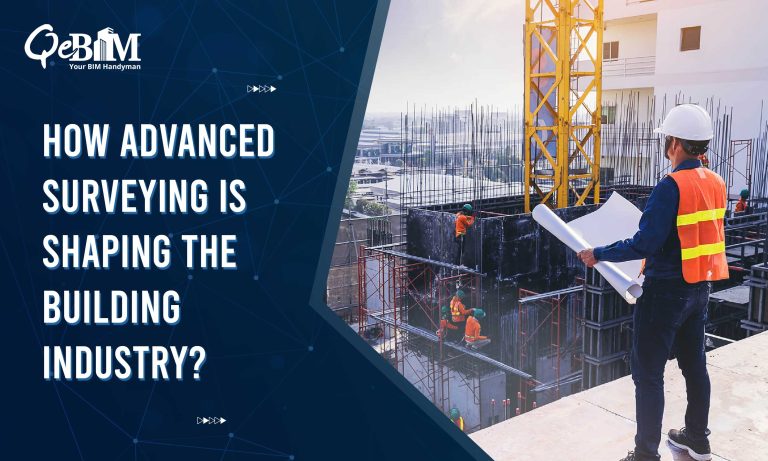How Advanced Surveying is Shaping the Building Industry?

In today’s rapidly evolving Architectural and construction scenario, advanced surveying techniques are transforming how we visualize, plan and execute the building projects. From enhancing design accuracy to optimizing the resource management, modern surveying tools have become indispensable in ensuring the efficiency, precision along with the sustainability in the construction.
Let’s explore the most impactful technologies and how are they shaping the modern building industry.
1) LiDAR (Light Detection and Ranging)
LiDAR technology uses the laser pulses to measure the distances between the scanner and surfaces hence creating the highly accurate 3D models of the environment.
Impact on the industry:
- Enables detailed topographic mapping, even in the hard-to-access areas.
- Supports BIM integration by offering precise site conditions.
- Enhances the renovation and restoration projects with accurate as-built data.
2) Drone Surveying (UAVs)
Unmanned Aerial Vehicles (UAVs) equipped with the high-resolution cameras and sensors have revolutionized the land and even the construction surveying.
Impact on the industry:
- Quick data capture of the large or complex sites.
- Real-time monitoring of the construction progress.
- Reduces field time and enhances the worker safety.
3) 3D Laser Scanning
It is also known as the terrestrial laser scanning. This method captures the physical environment using millions of laser points to create a “point cloud.”
Impact on the industry:
- Generates highly detailed 3D models for the design validation.
- Facilitates the clash detection in BIM workflows.
- Essential for creating accurate as-built documentation.
This forms the basis for Point Cloud to BIM Services which converts the raw point cloud data into intelligent BIM models used for planning, renovation as well as for the facility management.
4) Photogrammetry
Photogrammetry involves stitching together the overlapping photographs to form an accurate 2D or 3D maps and models.
Impact on the industry:
- Cost-effective compared to the other 3D scanning methods.
- Ideal for the heritage documentation and facade surveys.
- Compatible with the BIM and GIS systems.
5) Total Stations and Robotic Total Stations
These instruments combines the electronic theodolites as well as the distance meters to capture both the vertical and horizontal measurements.
Impact on the industry:
- Precision layout for the construction components (e.g., walls, foundations).
- Time-saving with automated tracking and remote control.
- Reduces human error in staking and setting out.
6) GNSS/GPS Surveying
Global Navigation Satellite Systems provide real-time location data with centimeter-level accuracy when used with RTK (Real-Time Kinematic) correction.
Impact on the industry:
- Crucial for the large-scale site layout and infrastructure planning.
- Enables continuous monitoring and real-time asset tracking.
- Reduces the dependence on the ground control points.
7) Mobile Mapping Systems (MMS)
These systems combine LiDAR, GNSS, cameras and IMUs (Inertial Measurement Units) on a moving vehicle or a platform to capture the data rapidly.
Impact on the industry:
- Efficient for surveying roads, railways and urban infrastructure.
- Provides multi-angle views for accurate modeling.
- Facilitates asset inventory management and maintenance planning.
8) Reality Capture and BIM Integration
Modern surveying goes beyond data collection—it feeds directly into the Building Information Modeling (BIM) for the real-time collaboration and planning.
Impact on the industry:
- Reduces the project risks through accurate digital representations.
- Allows for clash detection, energy modeling and facility management integration.
- Streamlines the communication among AEC professionals.
Scan to BIM Services plays a crucial role here, enabling the accurate BIM model creation from the laser scans for renovations, retrofits as well as the facility operations.
Embracing The Next Gen Surveying Software
In parallel with hardware advancements, next-gen surveying software is driving smarter, more integrated workflows.
Key software shaping the future:
- Autodesk Civil 3D – for civil infrastructure design and documentation.
- Trimble Business Center – for processing GNSS and survey data.
- Pix4D, Agisoft Metashape – photogrammetry and 3D modeling tools.
- ReCap Pro – for reality capture and point cloud integration with BIM.
- Leica Cyclone – for managing and editing laser scan data.
Benefits:
- Speeds up the data processing and improves the accuracy.
- Allows seamless interoperability across platforms.
- Enables collaboration between the remote teams with cloud-based solutions.
Future Trends in Surveying
The surveying field continues to evolve rapidly. Here’s what the future holds:
- AI & Machine Learning Integration: Surveying tools are starting to use AI to analyze terrain, detect patterns and flag anomalies—speeding up the decision-making and reducing the errors.
- AR/VR for Site Visualization: Augmented and virtual reality allow the clients and stakeholders to experience the survey data in immersive ways thereby enhancing the design communication and understanding.
- Automation & Robotics: Robotic systems and autonomous drones will further reduce the human intervention, increasing the safety and allowing the round-the-clock data collection.
- Cloud Collaboration: Surveying teams will increasingly adopt the cloud platforms for real-time data sharing, version control and integrated workflows with BIM and GIS.
- Sustainability and Smart Cities: Advanced surveying is enabling better environmental impact assessments, aiding in the the planning of smart cities and resilient infrastructure.
Conclusion
Advanced surveying techniques are no longer optional, they are essential tools in shaping the future of construction. As the building industry leans into the digital transformation, the technologies like LiDAR, drones, 3D scanning as well as the intelligent software solutions are empowering the AEC teams to work smarter, faster and with greater precision.
By embracing these innovations along with the top-notch Point Cloud to BIM Services—stakeholders across the AEC spectrum can make the informed decisions, reduce the reworks and deliver sustainable, high-performing built environments.
Ready to elevate your construction projects with modern surveying and modeling solutions?
Partner with us for Scan to BIM or Point Cloud to BIM services to bring precision, speed as well as accuracy to every stage of your building lifecycle.